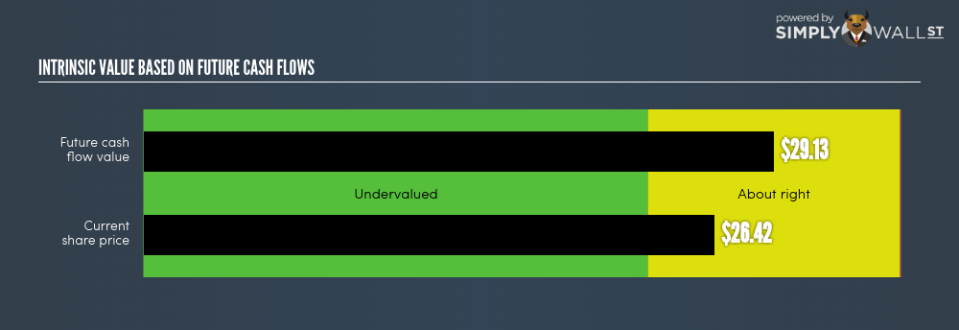Ally Financial Inc (NYSE:ALLY) Is Trading At A 9.31% Discount Right Now

Pricing consumer finance stocks such as ALLY is particularly challenging. Given that these companies adhere to a different set of rules relative to other companies, their cash flows should also be valued differently. For example, businesses that deal with loans are required to hold more capital to reduce the risk to shareholders. Focusing on elements such as book values, with the return and cost of equity, is suitable for evaluating ALLY’s value. Today I will take you through how to value ALLY in a reasonably accurate and straightforward approach. Check out our latest analysis for Ally Financial
What Is The Excess Return Model?
Two main things that set financial stocks apart from the rest are regulation and asset composition. United States’s financial regulatory environment is relatively strict. In addition to this, consumer financials generally don’t hold significant amounts of tangible assets on their balance sheet. So the Excess Returns model is suitable for determining the intrinsic value of ALLY rather than the traditional discounted cash flow model, which places emphasis on factors such as depreciation and capex.
The Calculation
The central belief for Excess Returns is that equity value is how much the firm can earn, over and above its cost of equity, given the level of equity it has in the company at the moment. The returns above the cost of equity is known as excess returns:
Excess Return Per Share = (Stable Return On Equity – Cost Of Equity) (Book Value Of Equity Per Share)
= (9.94% – 11.28%) x $34.72 = $-0.47
Excess Return Per Share is used to calculate the terminal value of ALLY, which is how much the business is expected to continue to generate over the upcoming years, in perpetuity. This is a common component of discounted cash flow models:
Terminal Value Per Share = Excess Return Per Share / (Cost of Equity – Expected Growth Rate)
= $-0.47 / (11.28% – 2.95%) = $-5.59
Combining these components gives us ALLY’s intrinsic value per share:
Value Per Share = Book Value of Equity Per Share + Terminal Value Per Share
= $34.72 + $-5.59 = $29.13
This results in an intrinsic value of $29.13. Relative to the present share price of US$26.42, ALLY is trading in-line with its true value. This means ALLY isn’t an attractive buy right now. Valuation is only one part of your investment analysis for whether to buy or sell ALLY. Analyzing fundamental factors are equally important when it comes to determining if ALLY has a place in your holdings.
Next Steps:
For consumer financials, there are three key aspects you should look at:
Financial health: Does it have a healthy balance sheet? Take a look at our free bank analysis with six simple checks on things like leverage and risk.
Future earnings: What does the market think of ALLY going forward? Our analyst growth expectation chart helps visualize ALLY’s growth potential over the upcoming years.
Dividends: Most people buy financial stocks for their healthy and stable dividends. Check out whether ALLY is a dividend Rockstar with our historical and future dividend analysis.
For more details and sources, take a look at our full calculation on ALLY here.
To help readers see pass the short term volatility of the financial market, we aim to bring you a long-term focused research analysis purely driven by fundamental data. Note that our analysis does not factor in the latest price sensitive company announcements.
The author is an independent contributor and at the time of publication had no position in the stocks mentioned.

 Yahoo Finance
Yahoo Finance 
